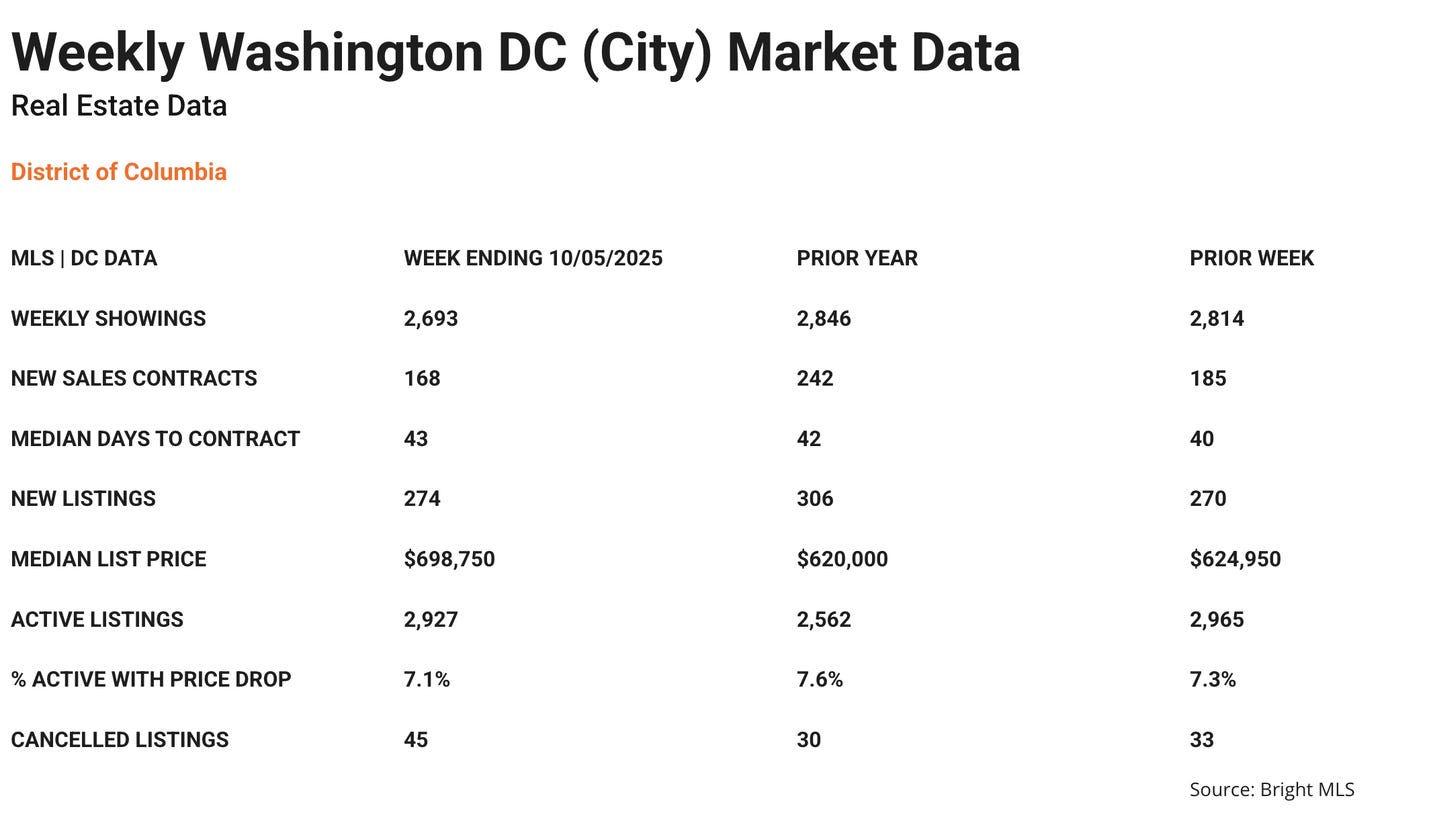📈 Market Decoder
I decode fresh, comprehensive real estate market data to identify emerging trends so buyers, sellers and investors can make informed decisions. Buying or selling in the District of Columbia? Start here.
The Week Following A Shutdown Is Slow
The October 1st government shutdown had a dampening effect on last week’s DC real estate activity. As expected, activity declined. Showings and new sales contracts dropped significantly, while median time from listing to contract increased. The District saw only four new MLS listing last week, as more sellers either hold back or list off-market to avoid punitive DOM tracking. The number of price reductions for active MLS listings was relatively flat, while canceled listings increased.
Here are last week’s numbers:
What To Expect Next Week
Without resolution of the government shutdown, we’ll likely see little to no change in market activity for this week.
Newly-retired federal workers who left government service on September 30, 2025 are testing the local job market. Many of the 154,000 who accepted the DOGE deferred Deferred Resignation Program (DRP) buyout worked and live in the DC region.
The overall impact on the D.C. job market is expected to be significant. Just ahead of the DRP expiration, there were 742 unemployment claims filed in the District of Columbia, according to FRED. That number is expected to increase dramatically in coming weeks.
At the close of 2024, 43.3% of Washington DC residents worked for the federal government. As of September 2025, federal civilian employees in the District of Columbia numbered 162,489, approximately 23.57% of DC’s estimated 2025 population of 689,545 (down from the 2024 total of 702,250 residents). With nearly a quarter of the District’s residents facing job insecurity and few employment prospects matching their skill and salary levels, it is no wonder that many are considering moves outside the area. And some federal workers are being moved involuntarily. The USDA announced plans to relocate more than half of its DC workforce to regional hubs across the country, as part of agency reorganization plan. As part of its reorganization plans, the agency will relocate thousands of DC-based employees to five hubs across the country, with lower locality pay rates. And it will reduce some of the remaining regional office management layers and consolidate duplicate functions.
A second Trump attempt at relocating the Bureau of Labor Management is also underway. The administration’s mandate, Project 2025, suggests moving the BLM’s headquarters back to Grand Junction, Colorado. Representative Jeff Hurd of Colorado (R) introduced the “Local Opportunities, Conservation, and American Lands Act” (LOCAL Act) in February, which would (again) relocate the BLM’s headquarters to Grand Junction. A prior attempt by the Trump administration to relocate the BLM headquarters to Grand Junction was reversed by the Biden administration. As of mid-2025, only approximately 60 core staff members remain in DC’s bureau.
Jobs And Real Estate
Why all this focus on employment? Because jobs are a key driver of the real estate market. The economic wellbeing of cities drives real estate values.
📬 For a comprehensive rundown on Washington DC real estate market data, and a breakdown on what’s selling, what’s sitting, and where leverage is shifting,
Subscribe free—or reach out at realestateinthedistrict.com for a consult built around your needs.



